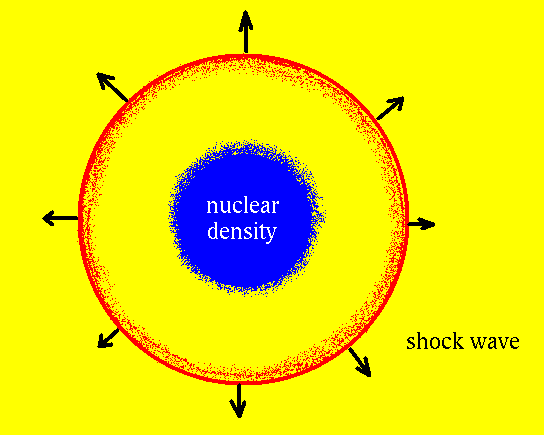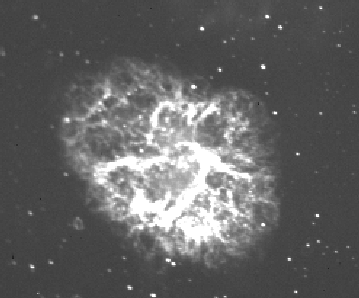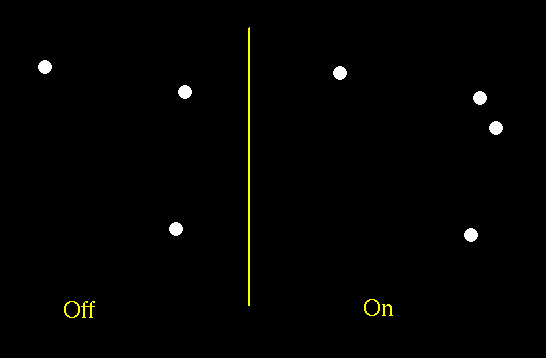Neutron Stars and Supernovae
Recall that, at least theoretically, a type II supernova explosion
leaves a massive core of neutrons behind.


- this should make a neutron star.
- or else, if it is too massive, it could make a black hole.
Is there any evidence that supernovae are associated with
neutron stars?
1)Crab Pulsar
Recall the Crab nebula, the remnant of a supernova that exploded in
1054 AD (minus the light travel time).

One can look for a neutron star at the center. There is one.
It has a period of 0.033 s = 33 ms, with one strong pulse and
one weak pulse each period.
- The pulses are seen in radio emissions (as always for pulsars).
- It is also seen in visible light.
- The star winks on twice each 33 ms.
- It is also seen in X-rays.

2)Vela Pulsar
The Gum Nebula in the constellation Vela is another supernova remnant.
It also contains a pulsar, with a period of 89 ms. It can also be
seen in X-ray, optical, and radio wavelenghts.
Davison E. Soper, Institute of Theoretical Science,
University of Oregon, Eugene OR 97403 USA
soper@bovine.uoregon.edu





